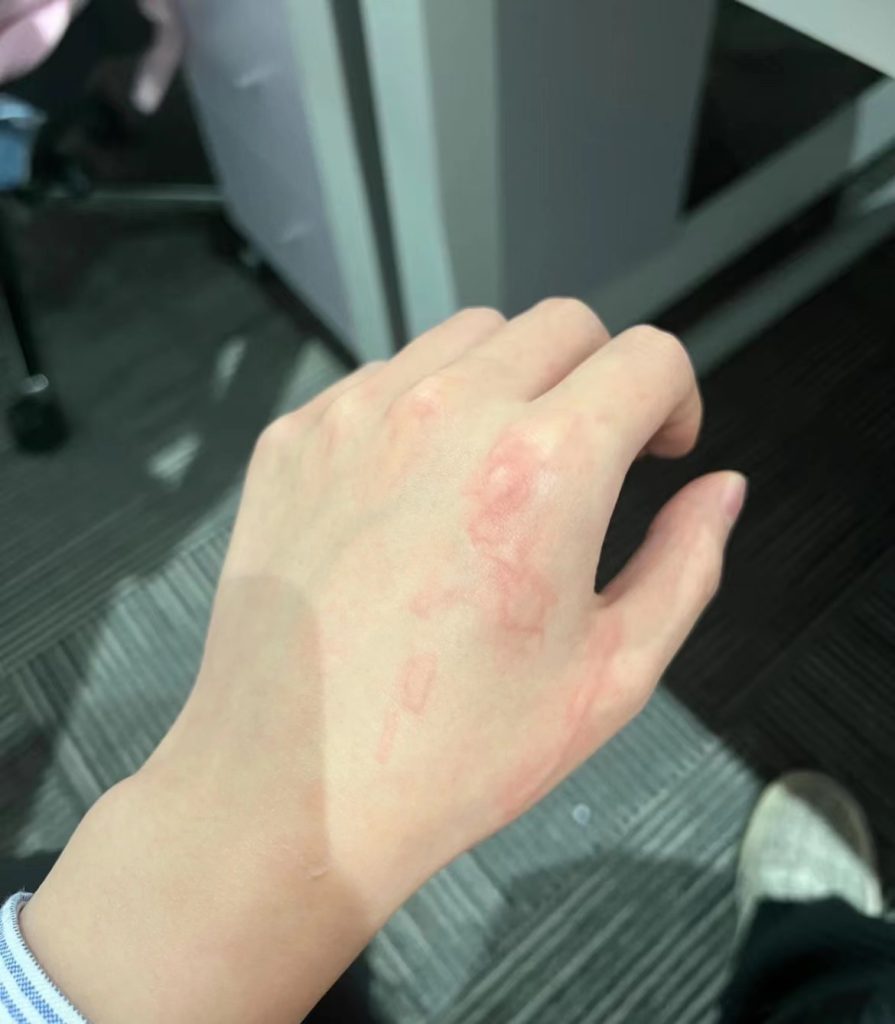Our skin, the body’s largest organ, acts as a protective barrier against external threats. However, lurking beneath this surface lies a potential menace that often goes unnoticed – skin mites. These minuscule arthropods, barely visible to the naked eye, can pose various risks to our skin health and overall well-being. In this essay, we delve into the dangers of skin mites, explore their impact on human health, and discuss effective strategies to deal with these microscopic adversaries.
The Intricacies of Skin Mites
Skin mites, scientifically known as “Demodex,” are a type of tiny parasitic arachnid that inhabit the hair follicles and sebaceous glands of humans and animals. Two species of Demodex are commonly found on human skin: Demodex folliculorum and Demodex brevis. These mites are considered commensal organisms, meaning they generally coexist with humans without causing noticeable harm. In fact, a certain level of Demodex presence on the skin is considered normal.

However, under specific conditions, these seemingly harmless mites can multiply and become problematic. Overpopulation of Demodex mites has been linked to various skin issues, including acne, rosacea, and certain types of dermatitis. The presence of these mites can also exacerbate existing skin conditions, leading to discomfort and irritation.
The Dangers of Skin Mites
While Demodex mites are a natural part of our skin ecosystem, an imbalance in their population can lead to several potential dangers:
Skin Irritation and Inflammation: An overabundance of mites can trigger skin irritation, redness, and inflammation. This is particularly evident in conditions like rosacea, where the presence of Demodex mites has been implicated in exacerbating symptoms.
Acne Aggravation: Studies suggest a correlation between Demodex mites and the development or exacerbation of acne. The mites’ activity within hair follicles and sebaceous glands can contribute to clogged pores, leading to the formation of acne lesions.
Dermatitis and Itching: In cases of Demodex-related dermatitis, individuals may experience intense itching, redness, and flaking of the skin. The mites’ activity can compromise the skin barrier, making it more susceptible to irritants and allergens.

Compromised Skin Barrier: As Demodex mites inhabit hair follicles and sebaceous glands, their activity can disrupt the skin’s natural protective barrier. This can lead to increased moisture loss, susceptibility to infections, and a compromised defense against environmental stressors.
Strategies for Dealing with Skin Mites
While it is virtually impossible to eliminate Demodex mites entirely, several strategies can help manage their population and mitigate the associated risks:
Maintain Proper Hygiene: Regular and gentle cleansing of the skin is crucial to keep mite populations in check. Use a mild cleanser to remove excess oil and debris without overstripping the skin’s natural oils.
Avoid Overuse of Harsh Products: Harsh skincare products can disrupt the skin’s balance and exacerbate mite-related issues. Opt for products that are non-comedogenic and formulated for sensitive skin.
Prescribed Treatments: In cases of severe mite-related conditions, a dermatologist may recommend prescription treatments. These can include topical medications, such as metronidazole or ivermectin, which target mite populations and alleviate symptoms.
Regular Exfoliation: Exfoliation helps remove dead skin cells and excess sebum, reducing the environment in which mites thrive. However, excessive exfoliation can worsen irritation, so it’s essential to strike a balance.
Manage Underlying Skin Conditions: Addressing underlying skin conditions like acne and rosacea can indirectly help manage Demodex mite populations. Consulting a dermatologist for a personalized treatment plan is recommended.
Avoid Sharing Personal Items: To prevent the spread of mites, avoid sharing personal items like towels, pillowcases, and cosmetics.
Maintain a Healthy Lifestyle: A balanced diet, regular exercise, and stress management can contribute to a healthy skin environment, reducing the likelihood of mite-related issues.
Consult a Dermatologist: If you suspect a mite-related skin issue or experience persistent symptoms, seeking professional advice from a dermatologist is essential for accurate diagnosis and appropriate treatment.

Conclusion
Skin mites, though often overlooked, can pose significant risks to our skin health and overall well-being. Understanding the potential dangers associated with Demodex mites and adopting proactive strategies for management are crucial steps in maintaining healthy and radiant skin. While complete eradication of mites is unrealistic and unnecessary, effective skincare practices, proper hygiene, and expert guidance can help us strike a balance between coexistence and minimizing the risks they may pose. By staying inf









